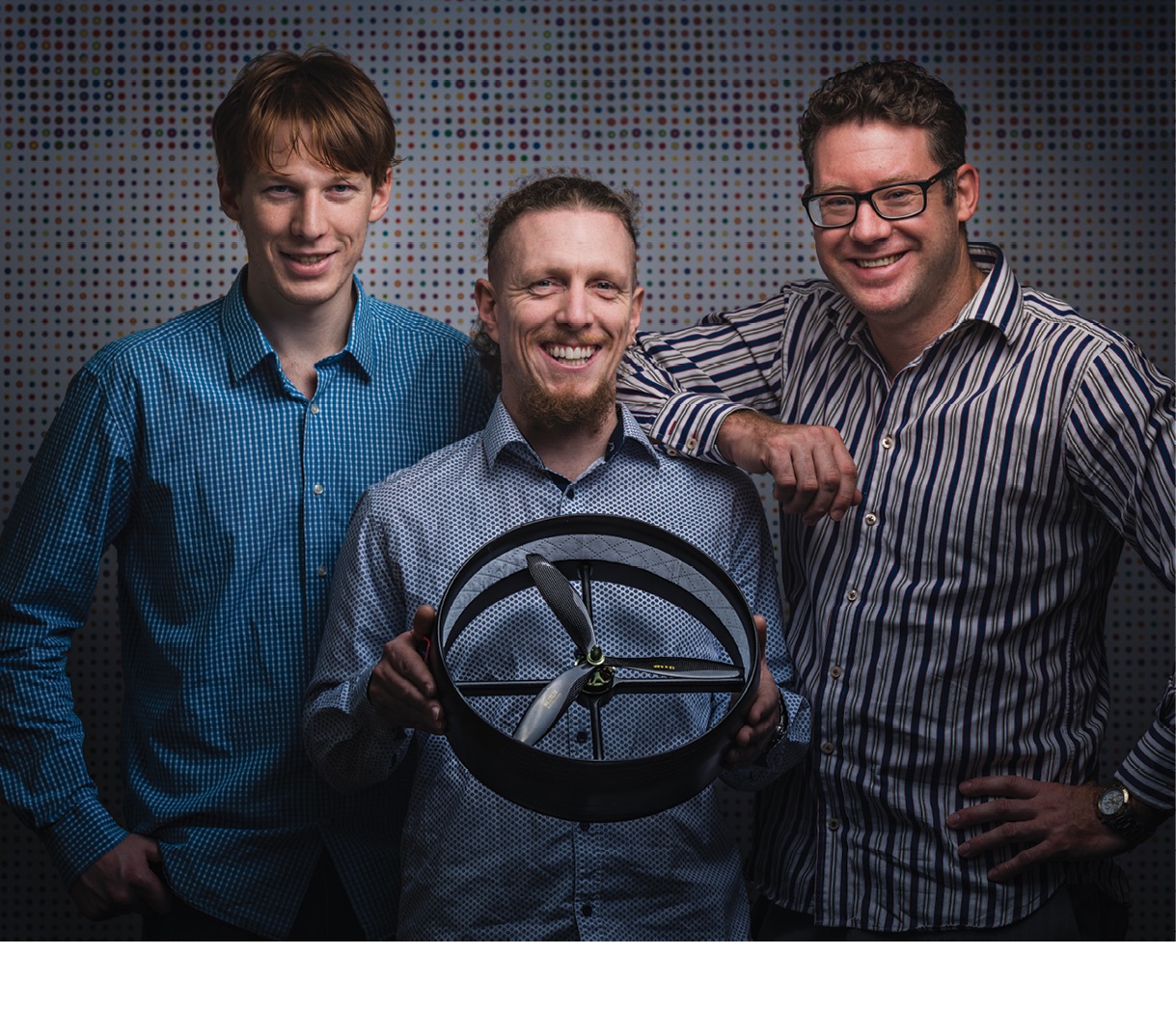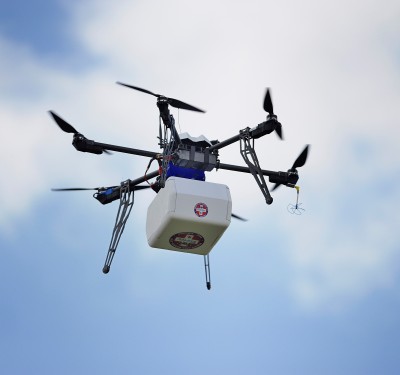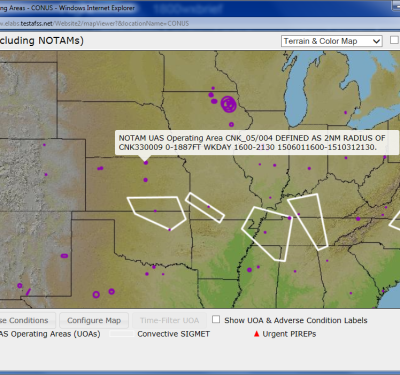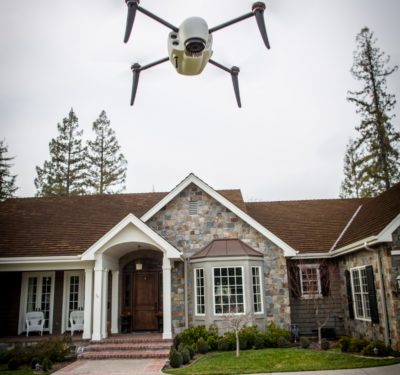 The problem of noise has long vexed drone operators. Many small multirotor aircraft are relatively quiet on their own and flying at height, but in large numbers or closer to the ground they could pollute the airspace with buzzing rotors. Or so some of those unhappy about drones would have you think.
The problem of noise has long vexed drone operators. Many small multirotor aircraft are relatively quiet on their own and flying at height, but in large numbers or closer to the ground they could pollute the airspace with buzzing rotors. Or so some of those unhappy about drones would have you think.
Concerned citizens aside, there are a number of reasons why quieter vehicles would be beneficial to operators. In a defense context, a loud unmanned aerial system (UAS) announces its presence. Similarly, any intelligence-gathering mission would be jeopardized if the target could hear an approaching surveillance drone.
Already, some vehicles are noisier than others.
“You have a wide range [of noise levels],” says Rick Gaeta, director of Oklahoma State University’s Unmanned Systems Development Center and a research professor in the school of mechanical and aerospace engineering. Fixed-wing vehicles are usually quieter than those that use rotors for power, but everything makes some sort of noise. “Just the fact that it moves through the air, it will make noise,” he said.
Gaeta has spent a lot of time over the years learning how to make vehicles quieter. His group works on a number of projects for defense and commercial applications, though not all are related to making quieter drones. He also believes noise is going to be a key issue for buyers.
“If I can choose between two UAVs and they do the same thing—but one is quieter—I’m going to take the quiet one,” he told Inside Unmanned Systems.
But getting to that quiet, it turns out, is a complicated thing.
Tougher Than It Looks
First, pure amplitude—”loudness”—is not always easy to measure. For example, if you’re trying to test the loudness of a certain type of propeller, “If you just put it on a stand and spin it up, that’s not the same noise it’ll make when it’s actually flying.”
Further, human beings perceive different noises in different ways.
“There’s a difference between annoyance and detection,” Gaeta said. “So noise [is] somewhat subjective.” A multirotor vehicle, with its higher frequency noises coming from propellers spinning at high RPMs, is likely to be louder and more annoying than a fixed-wing drone. But because the atmosphere absorbs higher frequencies, it’s not audible from as far away.
“If I had it 100 feet [away] you’ll be more sensitive to it being there. You’re going to be more annoyed by it,” Gaeta said.
Even external factors like cloud cover and terrain affect how loud a drone sounds from the ground, which can confound measurement techniques and wreak havoc with computer models that predict noise.
Still, Gaeta and his group have had some success. Lately he’s been testing new material combinations to find lightweight but strong construction materials that can also acoustically insulate noisy engines from the outside world. “There’s a carbon fiber [material] with a foam core that we use that has pretty good [sound] transmission loss for its weight.”
Besides military and police operations, there are many good reasons to try to go quieter.
In the civilian world, researchers monitoring wildlife by drone may not get access to the animal in its natural state if it reacts to a buzzing quadcopter. A study conducted last year found that black bears, at least, seem to show stress when drones fly overhead. According to an implanted heart-rate monitor, one bear’s heart rate jumped from 41 to 160 beats per minute. The animals appeared on video to be unperturbed by the flyovers, which suggests that animals can be stressed without displaying it outwardly.
Gaeta is working to start a project studying how drones affect livestock.
“Is it going to affect how they behave? Does it affect (the ranchers’) livelihood?”
He is also working with fellow Oklahoma State University professor Jamey Jacob on a project to detect the acoustic signatures of tornadoes to hopefully provide better warning. [See Inside Unmanned Systems’ piece, ‘Drones Could Provide Earlier Tornado Warnings.’] But listening for a tornado becomes more difficult if the aircraft doing the listening is making its own noise.
And noise is popping up as a problem even in unexpected places.
“Areas I didn’t even think [noise] would be an issue turn out to be an issue,” Gaeta said. “Even big stretches of pipeline inspection where you would think the populations are small—but even then, the people you fly over aren’t appreciative of having these noisy things flying relatively low to their homes and farms.”
Another area that could benefit from quieter UAS is filmmaking.
“The noise interferes on set, and results in added time and money to post-process the footage. And in the world of live streaming news, sporting events, [and] nature filming—(noise) is a disturbance and restricts use,” Mat Rowe, co-founder of New Zealand-based Dotterel Technologies, told Inside Unmanned Systems.
Nanofiber Shrouds
Dotterel believes it has a solution. It’s built nanofiber-based noise reduction shrouds that surround a vehicle’s rotors, dampening the sound and directing what’s left upwards, away from people and away from cameras and microphones.
“The shrouds have innovative acoustic materials incorporated that specifically absorb noise within the speech ranges,” Rowe said. “Our shroud also protects [the rotor blades] along with the reduced noise and with it, we can also make sure the efficiency goes up enough that it counteracts the weight of the shroud, so you don’t lose flight time.”
For now, the shroud prototype reduces noise such that a typical drone sounds twice as far away as it really is. That earned the Kiwis the Most Innovative Product from industry website News Shooter during the National Association of Broadcasters’ annual meeting in April.
Dotterel is working on licensing its product to a number of companies and hopes that its noise-reducing shrouds will be shipped with commercially available vehicles by this time next year.
No vehicle can be completely quiet. Even with a nearly silent propeller and engine, “you would start to hear what we call the airframe noise,” Gaeta said. “Just the fact of an aircraft flying—the landing gear make noise, the slats and flaps make noise.”
Gaeta firmly believes noise is an issue that will need to be addressed by the UAS community. “As we open up the airspace and have more and more commercial operations, there’s going to be an outcry for noise regulations,” he said. “The minute we get these in the air, it’s the first thing people will complain about.”
On the other hand, he said, “if you design a quiet [vehicle], they won’t even know it’s there.”






